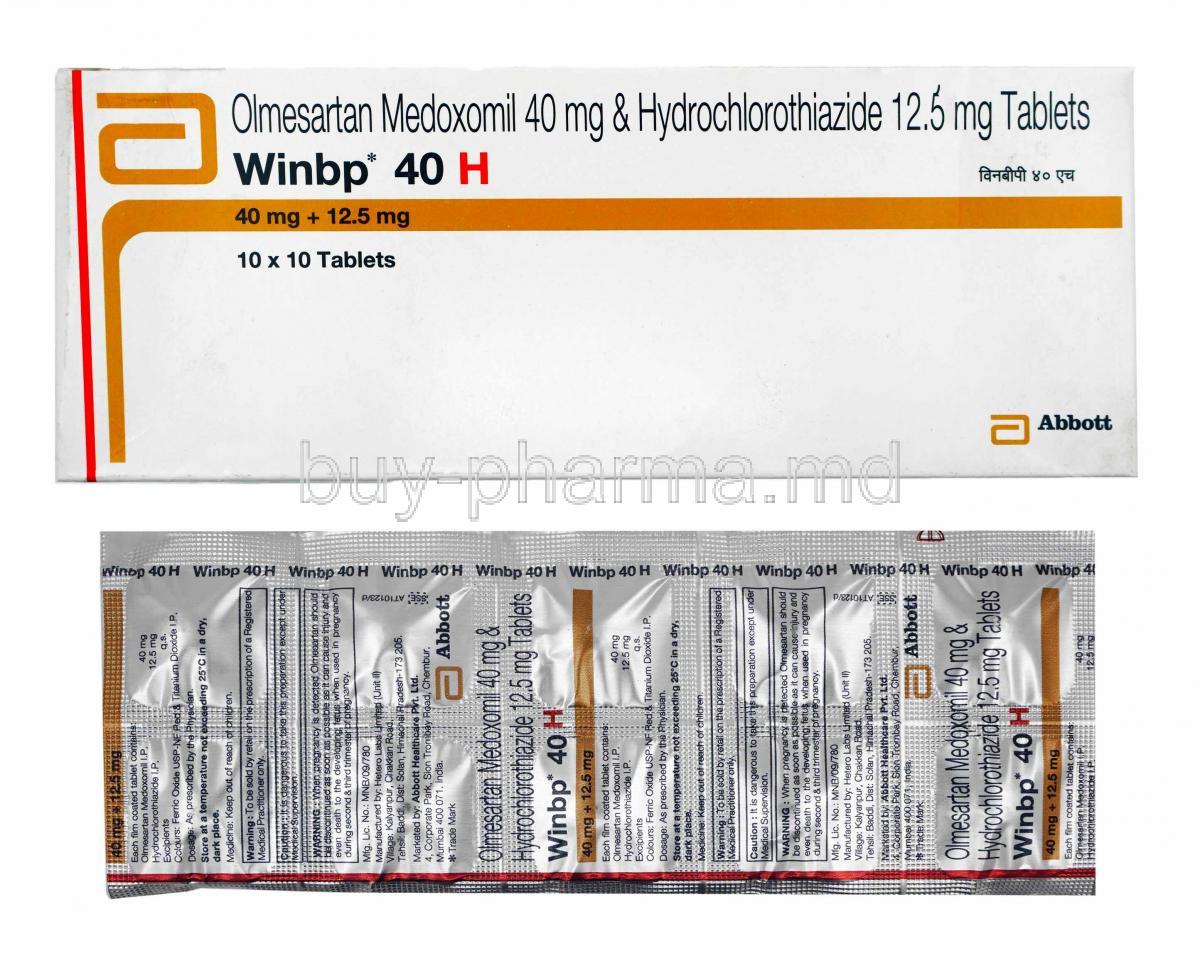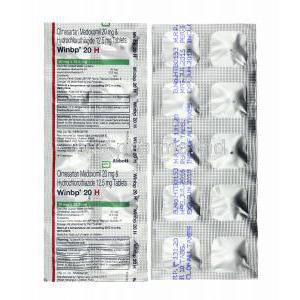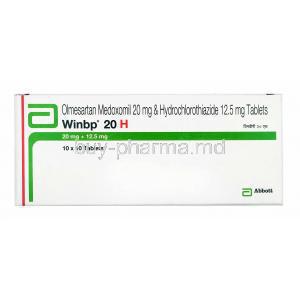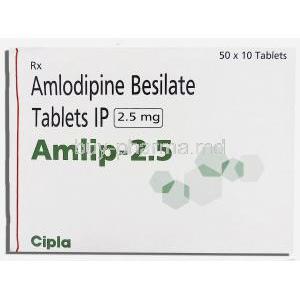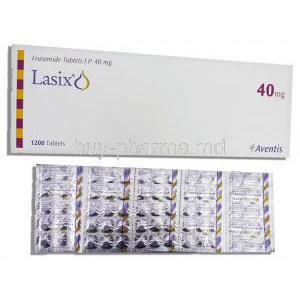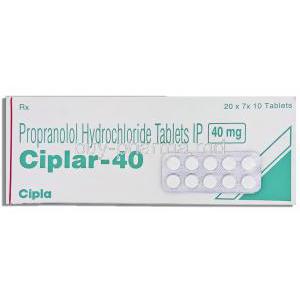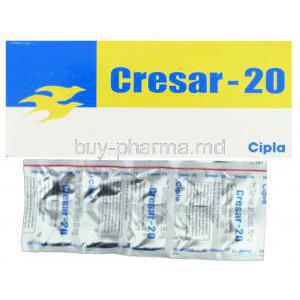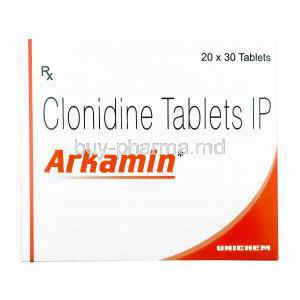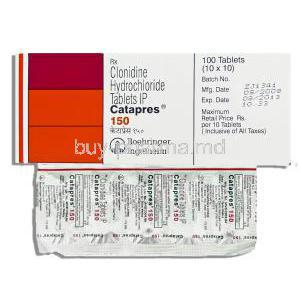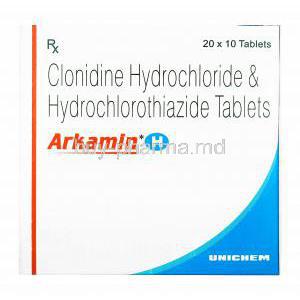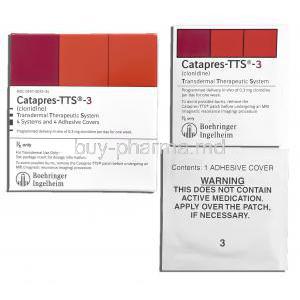Winbp H, Hydrochlorothiazide/ Olmesartan
- Introduction to Winbp H
- Composition and Formulation
- Medical Uses of Winbp H
- Off-Label and Investigational Uses
- How Winbp H Works (Mechanism of Action)
- Dosage and Administration Guidelines
- Common and Serious Side Effects
- Warnings and Precautions
- Contraindications for Use
- Drug Interactions and Incompatibilities
- Special Populations
- Careful Administration and Monitoring
- Overdosage and Emergency Management
- Important Handling and Safety Precautions
- Storage and Shelf Life
Introduction to Winbp H
Winbp H is a combination pill that treats high blood pressure (hypertension) by combining Olmesartan Medoxomil and Hydrochlorothiazide. It's designed for patients whose blood pressure isn't well-controlled with a single medication. This oral medication not only lowers blood pressure more effectively through its dual action but also makes it simpler for patients to stick to their treatment plan by reducing the number of pills they have to take.
It's recommended for treating moderate to high blood pressure and is sold globally under various brand names, including Winbp H, Benicar HCT, and Olmetec Plus.
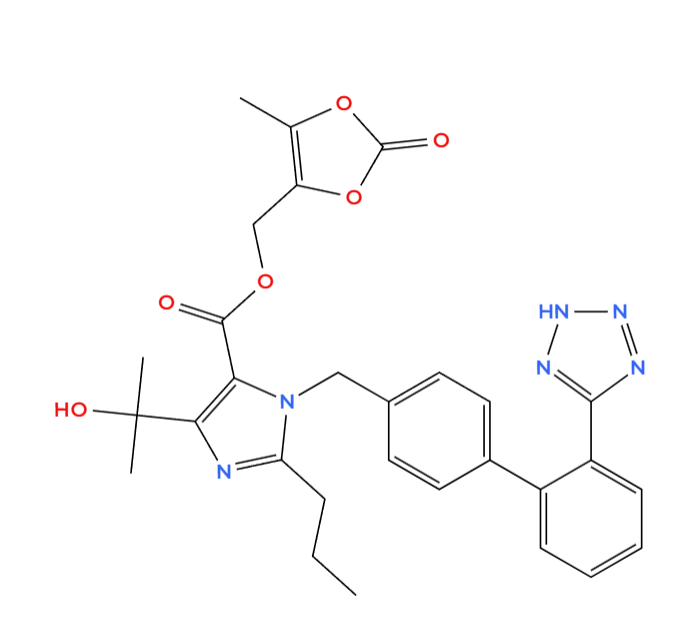
Olmesartan
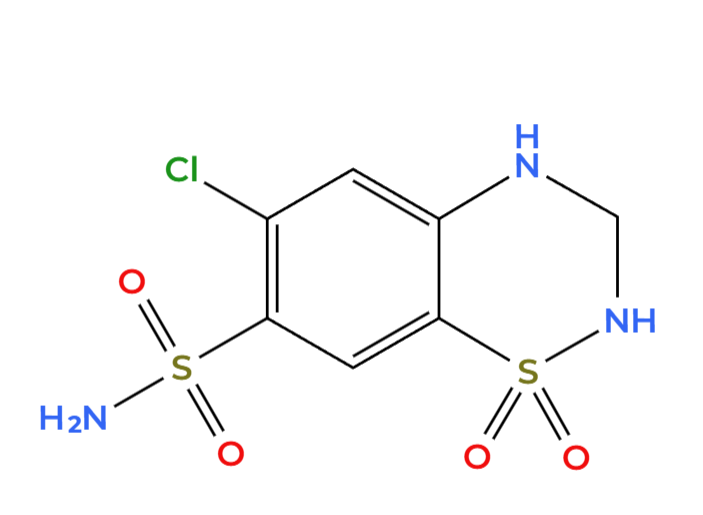
Hydrochlorothiazide
Composition and Formulation
The effectiveness of Winbp H relies on its two components, carefully crafted to ensure maximum absorption and therapeutic benefits.
Active Ingredients and Their Concentrations
- Olmesartan Medoxomil is usually found in the strengths of 20 mg or 40 mg each pill. When taken orally it quickly converts to its active form, known as Olmesartan.
- Hydrochlorothiazide is typically available in tablets with strengths of either 12,0 mg or 25 mg each, working to block sodium reabsorption in the tubules.
Inactive Ingredients and Excipients
Winbp H tablets are made with a safe mixture of inactive ingredients, called excipients, to keep the tablet stable and control how the medicine is released. These commonly include:
- Microcrystalline cellulose
- Lactose monohydrate
- Magnesium stearate
- Hypromellose
- Titanium dioxide (used in the coating)
Available Strengths and Tablet Appearance
Winbp H tablets come in several strength combinations, allowing for personalized treatment:
- 20 mg Olmesartan + 12.5 mg Hydrochlorothiazide
- 40 mg Olmesartan + 12.5 mg Hydrochlorothiazide
- 40 mg Olmesartan + 25 mg Hydrochlorothiazide
These tablets are usually round or oval, film-coated, and their color can differ depending on the strength and the manufacturer.
Comparative Combinations and Therapeutic Alternatives
There are several other combination therapies for high blood pressure that use either ARBs (angiotensin receptor blockers) or ACE inhibitors. Doctors choose these based on how well a patient tolerates them, other health conditions they might have, or how their body processes the medication. Some examples include:
- Lisinopril + Hydrochlorothiazide: This is an ACE inhibitor combination, but it might cause a dry cough.

- Losartan + Hydrochlorothiazide: A popular ARB combination, though it might be less potent than Olmesartan in some people.
- Triamterene/Hydrochlorothiazide: This option includes a potassium-sparing diuretic, which can be helpful for patients who tend to have low potassium levels.
- Valsartan + Hydrochlorothiazide: Another ARB combination that's been shown to be effective at lowering systolic blood pressure.
- Olmesartan Medoxomil + Hydrochlorothiazide: These are the main ingredients in Winbp H, providing strong blood pressure control with just one dose a day.
Pharmacological Comparisons
When it comes to diuretics and blood pressure medications, here's a quick comparison:
- Chlorthalidone vs. Hydrochlorothiazide: Chlorthalidone works for a longer period, but it comes with a greater chance of upsetting your body's electrolyte balance.
- Lasix (Furosemide) vs. Hydrochlorothiazide: Lasix is a loop diuretic typically used when there's too much fluid in the body (volume overload), while Hydrochlorothiazide is more effective for managing long-term high blood pressure.
- Olmesartan vs. Lisinopril: Olmesartan generally causes fewer side effects, like cough or severe swelling (angioedema), compared to ACE inhibitors such as Lisinopril, all while offering similar blood pressure control.
Medical Uses of Winbp H
Treatment of Essential Hypertension
Winbp H is mainly used to treat hypertension. A lasting condition where blood pressure remains high without a clear cause. The drug combines Olmesartan Medoxomil and Hydrochlorothiazide to impact the angiotensin–aldosterone system and increase natriuresis.
This leads to a decrease in both systolic and diastolic blood pressure levels. This treatment option is particularly beneficial for patients who don't respond well to single-drug therapy or have baseline pressures. This focuses on controlling resistance through renal mechanisms to regulate the tone of arteries in multiple dimensions.
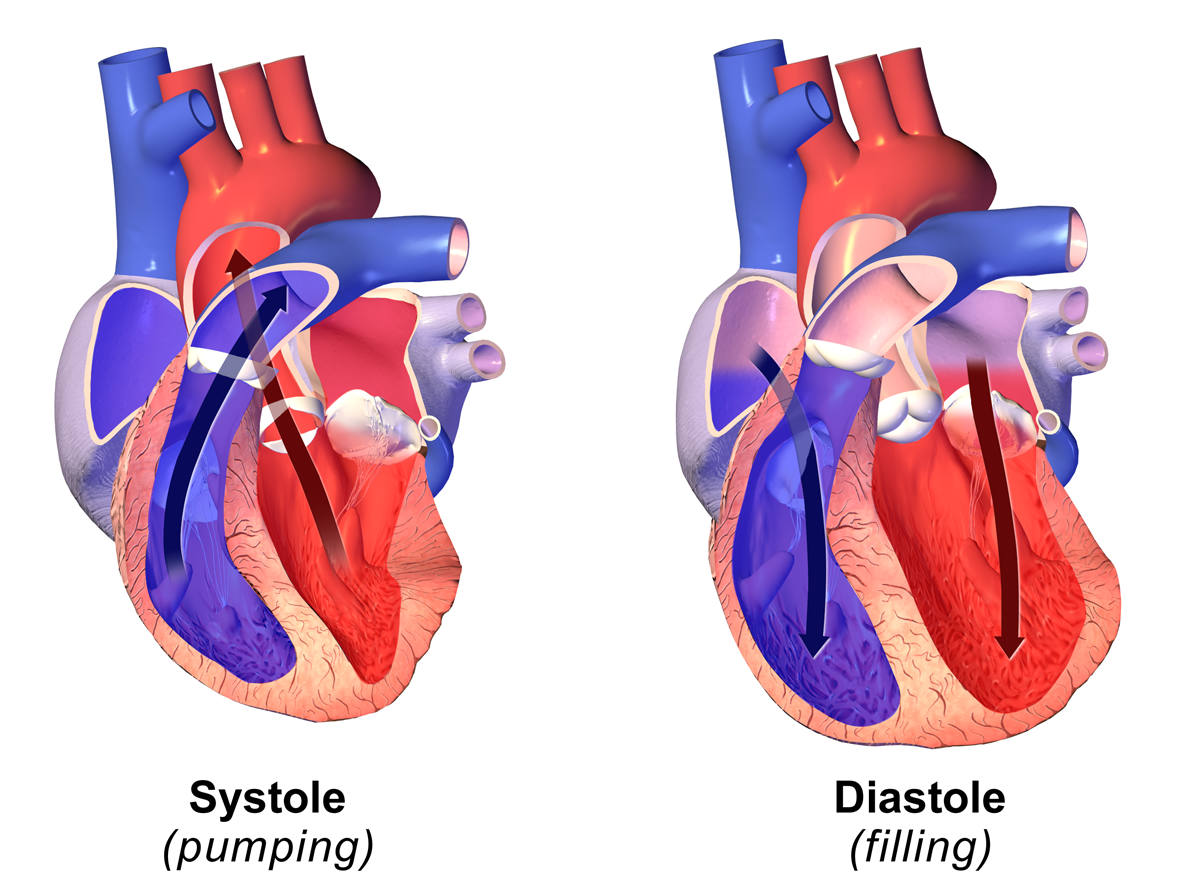
Management of High Blood Pressure in Patients Requiring Combination Therapy
When a single medication isn't enough to control blood pressure, Winbp H offers a good option, especially for individuals with other health conditions or a higher risk of heart problems. Winbp H combines two powerful ingredients to effectively manage these situations:
- Olmesartan is an ARB (angiotensin receptor blocker) that works by specifically blocking certain receptors. This helps relax blood vessels (reducing vasoconstriction) and prevents the body from holding onto too much sodium (which is usually driven by aldosterone).
- Hydrochlorothiazide is a diuretic that helps your kidneys remove excess sodium and water from your body. This reduces the amount of fluid in your blood and lowers resistance in your blood vessels.
Together, these medications create a synergistic effect, meaning their combined action is greater than what each drug could achieve alone. They work on both kidney function and blood vessel relaxation, significantly improving blood pressure control.
Use in Reducing Risk of Cardiovascular Events
Consistently high blood pressure is a major risk factor for serious heart problems like heart attacks, strokes, and heart failure. Carefully managing blood pressure with Winbp H can help prevent these issues. Research has shown that actively controlling blood pressure with medications like Winbp H can significantly lower the chances of these conditions occurring.
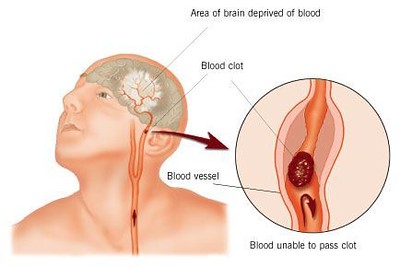
Furthermore, if patients have both metabolic syndrome and confirmed artery disease, adding a diuretic like Hydrochlorothiazide can offer extra heart protection. It does this by reducing both the amount of blood filling the heart before it pumps (preload) and the resistance the heart has to pump against (afterload).
Use in Patients with Volume Overload or Salt-Sensitive Hypertension
Winbp H is especially effective for volume-dependent hypertension, which often affects people who are salt-sensitive, have chronic kidney disease, or are older. This is because it contains a diuretic.
Here's how it works:
- Hydrochlorothiazide helps reduce the excess fluid in the body, a key issue in volume overload.
- Olmesartan (the other component) curbs the body's natural tendency to constrict blood vessels in response to fluid changes.
Together, these two drugs work synergistically, providing strong blood pressure control for individuals who typically have:
- Suppressed plasma renin activity (a hormone involved in blood pressure regulation).
- Ineffective ways of getting rid of sodium.
- An exaggerated response to sodium in their diet.
For those sensitive to salt, this combination is a sophisticated solution that simultaneously lowers the fluid in their blood vessels and reduces resistance throughout their circulatory system.
Off-Label and Investigational Uses
Off-Label Use in Heart Failure Management
While Winbp H isn't officially approved for treating heart failure, its ingredients, especially Olmesartan, have properties that might benefit certain patients by improving blood flow. Angiotensin II receptor blockers (like Olmesartan) can help reduce the harmful effects of hormones that contribute to changes in the heart's pumping chamber (left ventricular remodeling), fluid retention, and scarring of heart muscle.
For a specific type of heart failure called heart failure with preserved ejection fraction (HFpEF), particularly when patients also have fluid buildup and high blood pressure, adding a thiazide diuretic like Hydrochlorothiazide can ease symptoms by reducing the amount of blood the heart has to pump. Some doctors cautiously use Winbp H in:
- Early stages of heart disease are caused by high blood pressure.
- Patients who can't tolerate ACE inhibitors due to side effects like cough or severe swelling.
- Conditions where there's both heart failure and high blood pressure.
However, it's important to remember that this is an investigational approach and requires close monitoring for problems with electrolytes and kidney function.

Use in Proteinuria and Nephropathy in Diabetic and Non-Diabetic Patients
Microalbuminuria, a sign of declining kidney health, is common in people with diabetes and other kidney diseases. Recent studies suggest that Olmesartan can reduce protein in the urine independently of its blood pressure-lowering effects, likely by adjusting pressure within the kidney's filtering units (glomeruli) and through anti-inflammatory actions. When combined with Hydrochlorothiazide, this protective effect on the kidneys may be enhanced due to an even greater reduction in glomerular blood pressure.
While Winbp H isn't a primary kidney disease treatment, nephrologists sometimes use it in combination therapies. They do this when they want to block the renin-angiotensin-aldosterone system (RAAS) and need extra diuretic help.
Potential Role in Preventing Stroke in Hypertensive Patients
High blood pressure remains a major risk factor for both ischemic and hemorrhagic stroke (clot-related) and hemorrhagic (bleeding) strokes. Winbp H, with its dual action as a vasodilator (widens blood vessels) and diuretic (removes excess fluid), can effectively control systolic blood pressure—a key factor in protecting brain blood vessels.
- Observational studies and trial analyses suggest that combining ARBs (like Olmesartan in Winbp H) with diuretics could potentially lower the risk of both first-time and repeat strokes. Key physiological benefits might include:
- Improved arterial flexibility and faster pulse waves.
- A reduction in harmful morning blood pressure surges, which are known to trigger cardiovascular events.
While using WinBP H specifically for stroke prevention isn't yet standard practice, it's an area increasingly being investigated.
Use in Resistant Hypertension Unresponsive to Monotherapy
When high blood pressure remains stubbornly high even after using three different medications (including a diuretic), it's called resistant hypertension. To effectively manage this, Winbp H is often added to the treatment plan because it tackles the problem through multiple mechanisms. This particular combination medication is especially helpful for:
- Patients with increased fluid volume in their body and elevated hormonal activity.
- Individuals who are highly sensitive to salt or have kidney problems.
Winbp H's ability to combine RAAS (Renin-Angiotensin-Aldosterone System) blockade with natriuresis (increased sodium excretion) helps achieve target blood pressures when single or dual therapies fail. This medication plays a significant role in managing resistant hypertension and is increasingly being included in comprehensive treatment plans, sometimes alongside other drugs like calcium channel blockers or mineralocorticoid receptor antagonists.
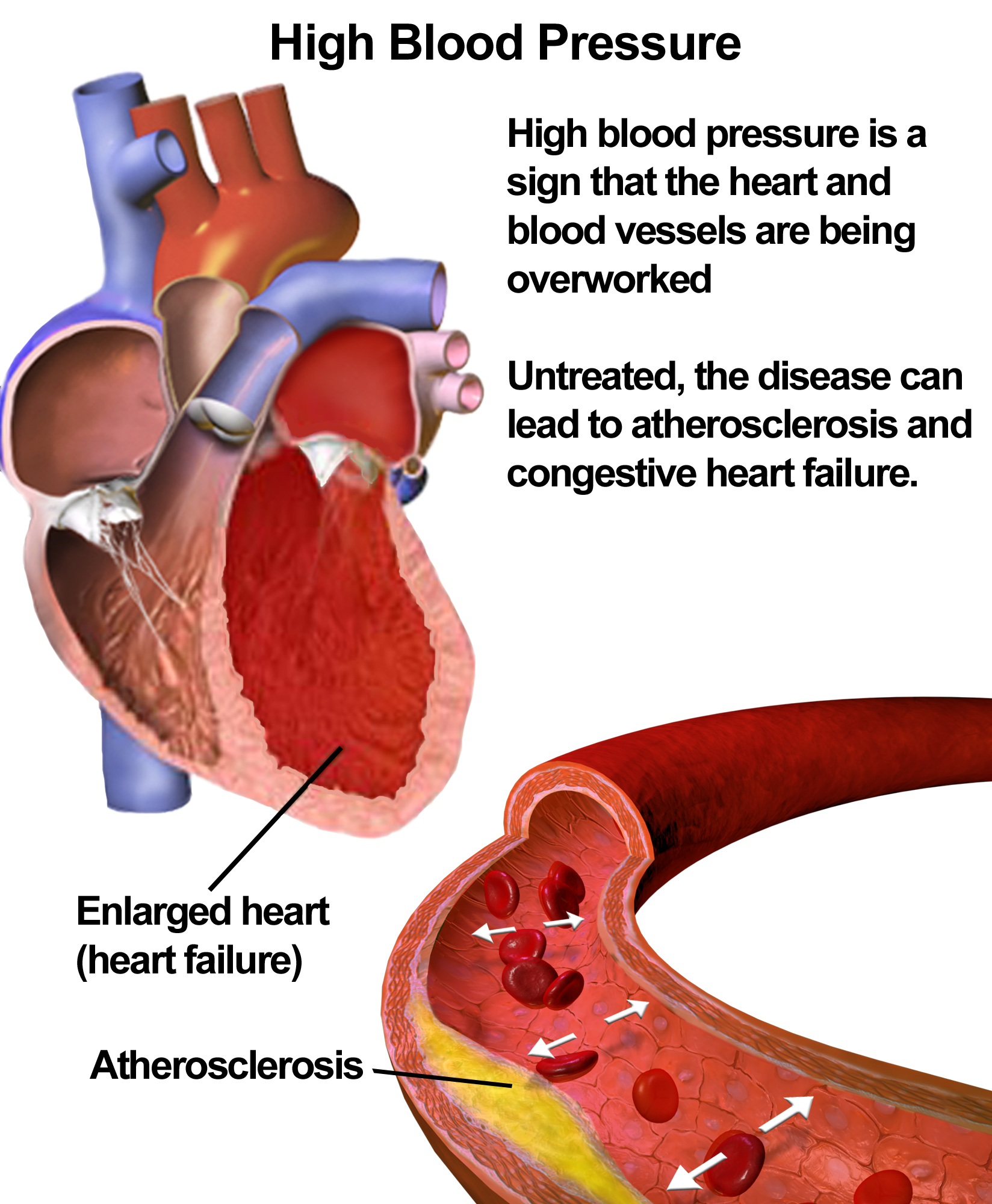
How Winbp H Works (Mechanism of Action)
Olmesartan: Angiotensin II Receptor Blockade and Vascular Effects
Olmesartan Medoxomil is a medication that's initially inactive (a prodrug). Once you take it, it quickly transforms into Olmesartan in your gut and bloodstream. Olmesartan then works by blocking specific receptors called angiotensin II type 1 (AT1) receptors.
By doing this, it achieves several important effects:
- It stops blood vessels from narrowing (vasoconstriction).
- It reduces the release of aldosterone, a hormone that can raise blood pressure.
- It lessens the activity of the sympathetic nervous system, which contributes to blood pressure regulation.
Ultimately, this leads to decreased resistance in your blood vessels, improves the flexibility of your arteries, and promotes vasodilation (widening of blood vessels) through natural processes in your body.
Hydrochlorothiazide: Diuretic Action and Natriuresis
Hydrochlorothiazide works in your kidneys by blocking a specific system that reabsorbs sodium and chloride. This action leads to your body getting rid of more sodium, chloride, and water through increased urine. As a side effect, it can also cause a slight drop in potassium levels. The overall result is a reduction in the amount of fluid in your blood (plasma volume), less blood returning to your heart (preload), and a minor decrease in how much blood your heart pumps out, all of which contribute to its blood pressure-lowering effects.
Synergistic Effect on Blood Pressure Reduction
Combining Olmesartan and Hydrochlorothiazide can sometimes offer powerful, complementary benefits:
- Balanced Hormone Levels: Blocking the Renin-Angiotensin-Aldosterone System (RAAS) with Olmesartan helps to counteract the increase in certain hormones that diuretics can cause.
- Volume and Pressure Harmony: While Hydrochlorothiazide reduces fluid in your blood (plasma volume) to lower pressure, Olmesartan works against blood vessel constriction. This dual action helps maintain a healthy balance between blood volume and pressure.
- Better Blood Vessel Health: This combination can improve the function of your blood vessel linings, leading to more available nitric oxide, which in turn promotes long-lasting widening of blood vessels.

Dosage and Administration Guidelines
Recommended Starting Dose for Adults
The usual starting dose for Winbp H is 20 mg of Olmesartan combined with 12.5 mg of Hydrochlorothiazide once daily. If patients were already taking these two medications separately, they can directly switch to the combined tablet.
Titration Schedule and Maximum Dose Limits
The recommended daily dosage is 40 mg of Olmesartan combined with 25 mg of Hydrochlorothiazide.
Adjustments in Patients with Renal or Hepatic Impairment
For kidney health, it's best to avoid this medication if your creatinine clearance is below 30 mL/min. If you have kidney impairment, start cautiously with lower strengths, like 20 mg of one component and 12.5 mg of another.
Regarding liver health, mild to moderate liver dysfunction might not require dose adjustments, but it's wise to monitor closely. However, if you have severe liver impairment, it's recommended to avoid using these medications as there isn't enough data to support their safe use in such cases.
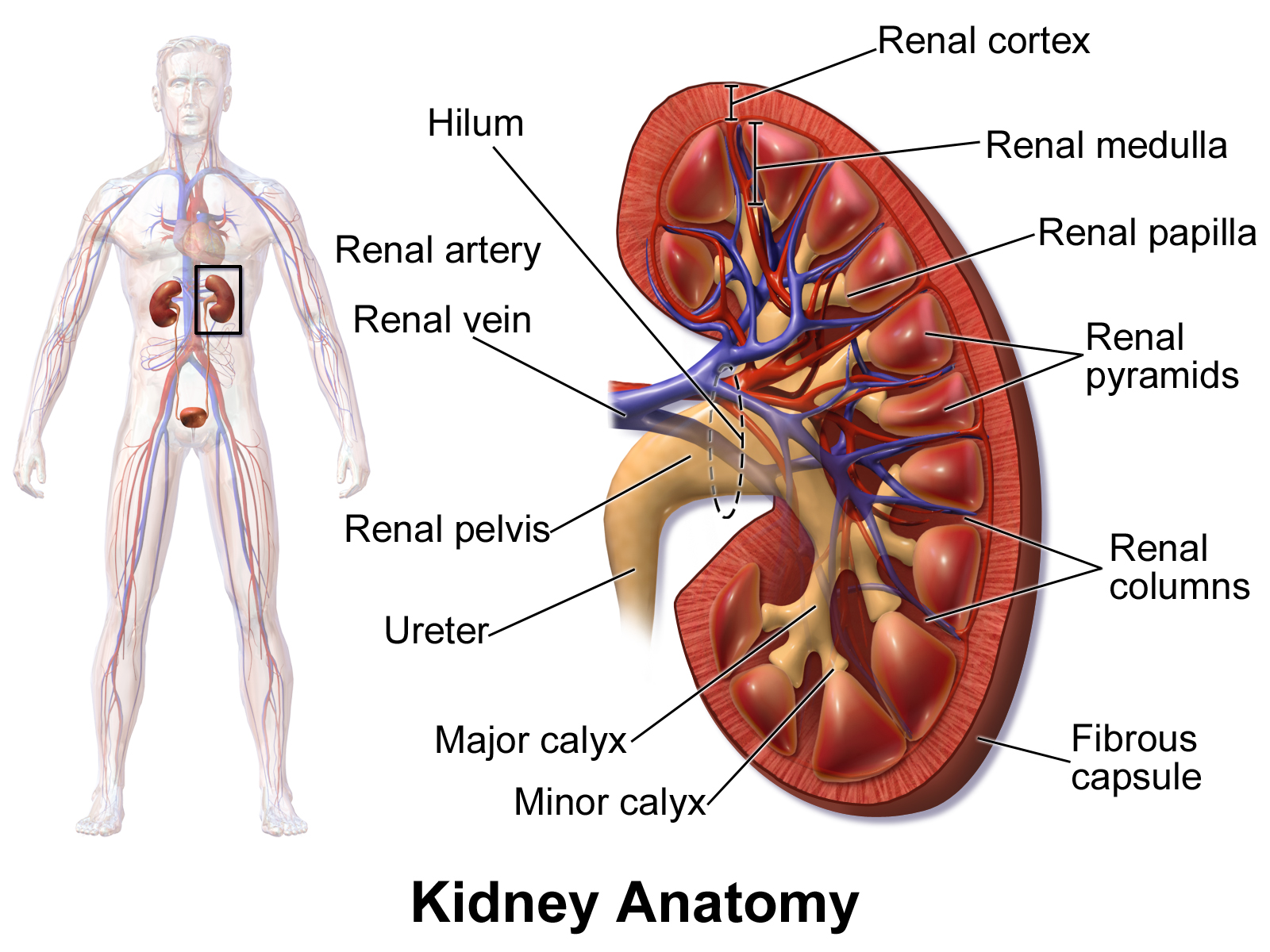
Instructions for Missed Dose
Take the missed tablet soon as you remember it. If its less, than 12 hours until your next dose is due then skip the missed one to avoid taking two doses together and continue with your regular dosing schedule afterwards.
Administration With or Without Food
Olmesartan Medoxomils effectiveness isn't impacted if taken with or, without food and the absorption of Hydrochlorothiazide remains consistent regardless of meals consumed before taking the tablets.
Best Time to Take Olmesartan
It is practice to take medication in the morning so that the highest diuretic effect occurs during the day and reduces urination frequency. However it is crucial to stick to a routine either in the morning or early afternoon to ensure consistent coverage, for controlling high blood pressure.
Common and Serious Side Effects
Common Side Effects of Winbp H
Winbp H, a combination of Olmesartan Medoxomil and Hydrochlorothiazide, is generally well-tolerated when taken as prescribed. However, like all medications, it can cause some side effects, which are usually temporary and manageable.
Common side effects include:
- Dizziness, headaches, and fatigue: These often appear when you first start the medication or when your dosage is adjusted, and are usually related to blood vessel widening and changes in blood volume.

- Frequent urination: This is common in the early stages of treatment due to Hydrochlorothiazide's diuretic effect, which is how it helps lower blood pressure.
- Electrolyte imbalances (low potassium or sodium): These can lead to symptoms like muscle cramps, palpitations, or even cognitive issues. If you're on this medication long-term, your doctor will likely check your blood levels regularly.
- Nausea or stomach bloating: These digestive issues can occur occasionally but are generally not severe or frequent.

- Weight changes: While some people might gain weight due to altered glucose processing or fluid retention (especially with hydrochlorothiazide), thiazide diuretics are typically associated with stable weight or even a slight decrease.
Olmesartan Medoxomil side effects: These can include back pain and respiratory issues like bronchitis or pharyngitis. It's less likely to cause a cough compared to ACE inhibitors.
Serious Side Effects and Adverse Reactions
Though uncommonly seen in practice Winbp H has the potential to cause effects that may necessitate immediate medical attention.
- Excessive reduction in blood pressure can cause hypotension or faintness in individuals, with volume loss or those taking diuretics.

- Severe imbalances, in electrolytes like potassium levels (hypokalemia), low magnesium levels (hypomagnesemia), or low sodium levels (hyponatremia), could lead to irregular heartbeats or issues with muscle function. Effective monitoring through lab tests is crucial for managing these imbalances.
- In individuals with a predisposition, such as those having renal artery stenosis, the use of medications, like Olmesartan, that target the renin angiotensin aldosterone system (RAAS) could lead to decreased renal blood flow and trigger acute kidney dysfunction.
- Rare instances of hypersensitivity reactions such as skin hives (urticaria), swelling (angioedema), or severe, life-threatening responses (known as anaphylaxis) may arise and require prompt cessation of the medication.
Warnings and Precautions
Risk of Hypotension in Volume-Depleted Patients
Patients who have sodium levels or reduced volume—such as individuals taking doses of diuretics or undergoing dialysis—are more vulnerable to significant low blood pressure when starting the Winbp H medication regimen. Careful initiation is recommended with monitoring by healthcare providers and adjustment of dosage as needed.
Monitoring Requirements for Renal Function and Electrolytes
Due to the drug's impact on balance and its influence on the angiotensin–aldosterone system (RAAS), it is necessary to regularly evaluate;
Potassium and sodium are electrolytes in the body, along with magnesium.
It is crucially important to consider this aspect in patients or individuals with existing kidney issues.
Photosensitivity Reactions Associated with Hydrochlorothiazide
Hydrochlorothiazide can make your skin more sensitive to the sun, leading to severe sunburns or skin rashes from light exposure. Patients taking this medication should be advised to use broad-spectrum sun protection and avoid extended time in the sun.

Risk of Gout Exacerbation
Thiazide diuretics can increase the levels of acid in the blood by decreasing its excretion through the kidneys. May lead to gout attacks, in people who are prone to it. If a patient has a past of uric acid levels or ongoing gout problems it's advisable to explore options, for blood pressure control unless the advantages clearly surpass the risks involved.
Contraindications for Use
Known Hypersensitivity to Olmesartan, Hydrochlorothiazide, or Sulfonamide Derivatives
Winbp H should not be used in individuals who have shown a sensitivity to either Olmesartan Medoxomil or Hydrochlorothiazide – its components. Moreover, individuals allergic to sulfonamide-derived drugs may exhibit reactions due to the likeness of Hydrochlorothiazide. Hypersensitivity responses could appear as hives, breathing difficulties, or, in cases life threatening anaphylaxis.
Anuria
Winbp H should not be used in patients with anuria. A condition where urine is not produced. As it requires kidney output for its effects to work effectively and could potentially worsen kidney strain in anuric patients.
Pregnancy (Especially Second and Third Trimesters)
Olmesartan Medoxomil can have effects on children and lead to issues like kidney problems and abnormal skull development in fetuses. Similarly thiazide diuretics also carry risks for the baby by lowering blood flow to the placenta and causing imbalances in electrolytes of the newborn. It is advised not to use Winbp H during the stages of pregnancy. Women capable of becoming pregnant should make sure to use birth control methods while undergoing treatment.

Severe Hepatic Impairment
Patients with liver dysfunction face challenges with the breakdown and removal of Olmesartan from their bodies; in cases of bile blockage or hepatic encephalopathy, where this process may be hindered. The combination of Hydrochlorothiazide's effects on levels could worsen symptoms and fluid balance issues in such patients. For this reason, considering the risks involved in situations involving severe liver inadequacy, Winbp H should not be used.
Hydrochlorothiazide and Alcohol
When someone takes Hydrochlorothiazide along with alcohol at the same time can make the blood pressure-lowering effects stronger. It could cause dizziness when standing up or fainting as well. Alcohol also increases urine production. Might worsen dehydration issues and imbalances in electrolytes, which can put a strain on the kidneys. For individuals with a compromised ability to regulate their functions like blood pressure and heart rate, they naturally would face a greater risk in this situation.
Drug Interactions and Incompatibilities
Interaction with NSAIDs and Increased Renal Risk
Nonsteroidal anti-inflammatory medications such, as ibuprofen and naproxen may reduce the blood pressure-lowering benefits of Winbp H. Lead to kidney problems developing quickly. Combining an ARB (angiotensin receptor blocker) diuretic (water pill) and NSAID has been linked to kidney issues because it lowers pressure in the kidneys' filtering units and affects blood flow to the kidneys .
Additive Hypotensive Effect with Other Antihypertensives
When Winbp H is taken with beta blockers or calcium channel blockers along with diuretics, it can cause a decrease in blood pressure that needs to be closely monitored to avoid potential issues like dizziness or faintness. Especially in older individuals.
Lithium Toxicity with Concurrent Use
Hydrochlorothiazide has the potential to reduce the elimination of lithium by the kidneys, which can result in an increase in lithium levels and possibly lead to toxicity issues associated with lithium intake, such as tremors and cognitive disturbances, along with nephrogenic diabetes insipidus symptoms showing up well. It is recommended to monitor the blood levels of lithium or consider avoiding using these two medications entirely as a precautionary measure.

Altered Glucose or Lipid Levels with Certain Medications
Thiazide diuretics have the potential to affect glucose tolerance and increase levels of cholesterol and triglycerides in the bloodstreams of individuals taking them with corticosteroids or diabetes medications, like hypoglycemics or insulin; this could cause fluctuations, in blood sugar control mechanisms which need to be monitored regularly by healthcare providers who may need to make adjustments to the dosage of co administering medications accordingly.
Alcohol Interaction and Its Impact on Blood Pressure
Excessive alcohol intake has the potential to enhance the blood pressure-lowering impact of Winbp H. This could result in feelings of dizziness or lightheadedness well as fainting spells, for individuals taking this medication combination therapy. Furthermore, it might disrupt metabolic functions by increasing acid levels in the body or causing dehydration. Patients are advised to limit or refrain from consuming alcohol during their course of treatment, with this combined therapy.
Special Populations
Administration to Elderly Patients
When prescribing Winbp H to adults or elderly individuals, doctors need to be extra cautious. This is because, as people age, their bodies process drugs differently: their kidneys become less efficient at filtering waste, drugs might be broken down differently, and the receptors that control blood pressure may not respond as well.
- For these patients, it's advisable to start with a lower dose, such as Olmesartan 20 mg/Hydrochlorothiazide 12.5 mg, and gradually increase it based on how they respond and tolerate the medication.
- Elderly individuals are particularly vulnerable to low blood pressure (hypotension) and declining kidney function. They are more prone to dehydration and a sudden drop in blood pressure when standing up (orthostatic hypotension) due to weaker natural reflexes. Furthermore, reduced kidney function with age increases the risk of azotemia (a buildup of waste products in the blood), especially if they're also taking NSAIDs or other kidney-damaging substances.
Therefore, it's crucial to closely monitor kidney function and electrolyte levels in this age group to prevent adverse effects.
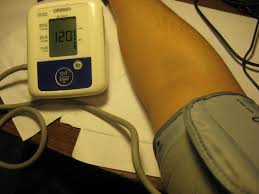
Administration to Pregnant Women and Nursing Mothers
Winbp H is not recommended for use after the first trimester of pregnancy due to potential harm to fetal development.
- Using Olmesartan during pregnancy carries risks to the fetus, including reduced amniotic fluid, low blood pressure in newborns, kidney problems, and skeletal abnormalities. Thiazide diuretics can also impact placental blood flow, potentially restricting the baby's growth in the womb.
- For pregnant women who need blood pressure control, safer alternatives with established use records, such as labetalol, methyldopa, or nifedipine, are recommended.
- There's limited information on whether Olmesartan is present in breast milk. However, Hydrochlorothiazide is known to pass into breast milk in small amounts, which could potentially affect milk supply or composition.
- For nursing mothers taking Hydrochlorothiazide (HCTZ), it's advisable to consider alternative medications to Winbp H or, if Winbp H is essential, to stop breastfeeding to prevent possible dehydration or electrolyte imbalances in the baby due to the diuretic effects.
Administration to Pediatric Patients
The safety and effectiveness of Winbp H in children under 18 years old have not been fully established. There's limited data available from regulatory agencies regarding its use in this age group.
- While Olmesartan alone might be an option for treating high blood pressure in children and teenagers, combining it with Hydrochlorothiazide raises concerns about potential stunted growth, fluid and electrolyte imbalances, and hindered kidney development.
- There's a scarcity of trials specifically focused on this age group, and the long-term safety results are not yet well-documented.
Therefore, for patients younger than 18, it's best to avoid using Winbp H unless absolutely necessary and no other suitable options exist. If it must be used, the dosage should be carefully determined based on the patient's weight, kidney function, and the critical need for treatment.
It's crucial to consider alternative treatment options for this vulnerable group until more comprehensive pediatric data becomes available.
Careful Administration and Monitoring
Patients with Renal or Hepatic Dysfunction
If a patient has weakened kidney or liver function, Winbp H should be used with caution because both of its active ingredients, Olmesartan and Hydrochlorothiazide, are processed by the liver and removed by the kidneys.
Reduced kidney function can lead to a buildup of the medication in the body and cause electrolyte imbalances, especially if the creatinine clearance is below 30 mL/min.
In individuals with liver dysfunction, changes in how drugs are converted and lower levels of albumin can increase the risk of low blood pressure or overall toxicity. Therefore, it's best to limit or avoid using Winbp H if liver impairment is present.
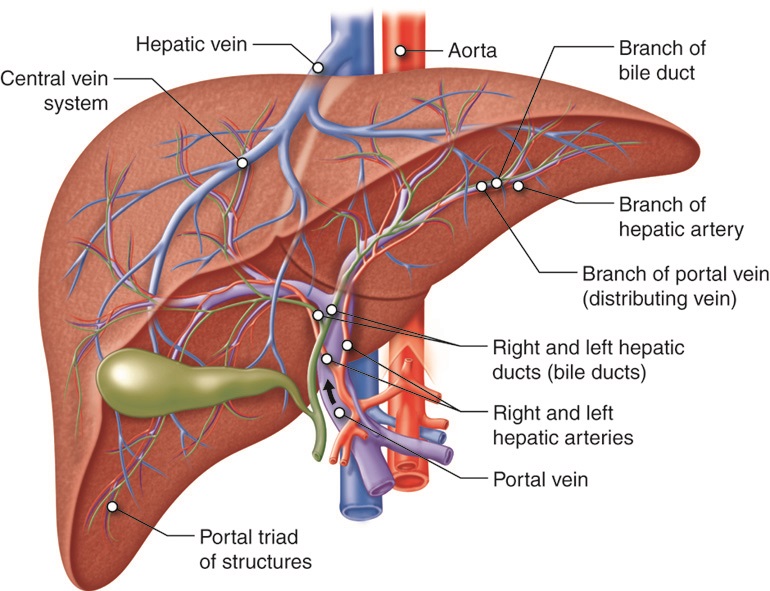
Patients with Systemic Lupus Erythematosus
Hydrochlorothiazide has been linked to worsening symptoms in individuals with lupus erythematosus (SLE). While uncommonly observed instances of immune system flares—marked by pain, skin rashes and kidney issues—might manifest. It is crucial to stay watchful for patients with conditions. Regularly checking for antibody levels or sudden onset symptoms might be necessary while undergoing treatment.
Patients with Hyperuricemia or Gout
Thiazide diuretics can lower the clearance of urate in the body. Result in levels of uric acid, in the blood stream which might trigger instances of acute arthritis in people with a tendency towards it like Winbp H does for such individuals at risk of experiencing such flares due to consuming foods rich in purines or having a family background prone to such episodes of joint pain and swelling caused by excess uric acid deposits especially among those, with a history of recurring kidney stones from uric acid or uncontrolled high levels of uric acid.

Frequency of Laboratory Monitoring
To prevent medication-related problems, it's crucial to proactively monitor certain health parameters periodically:
- Kidney Function: Your creatinine, BUN (blood urea nitrogen), and estimated GFR (glomerular filtration rate) should be checked every 3 to 6 months.
- Blood Electrolytes: Levels of sodium, potassium, magnesium, and calcium should be monitored monthly when you first start the medication.
- Uric Acid and Glucose: These should be checked, especially if you have diabetes or are prone to gout.
Monitoring might be more frequent for older patients or those with other conditions like diabetes, heart failure, or chronic kidney disease.
Overdosage and Emergency Management
Signs and Symptoms of Overdose
Taking too much Winbp H can cause a range of dangerous, even life-threatening, symptoms. These include:
- Extremely low blood pressure (profound hypotension)
- Severe electrolyte imbalances, such as very low potassium (hypokalemia) or low sodium (hyponatremia)
- Dehydration and low blood volume (hypovolemia)
- Irregular heartbeats (cardiac arrhythmias) or fainting (syncope)
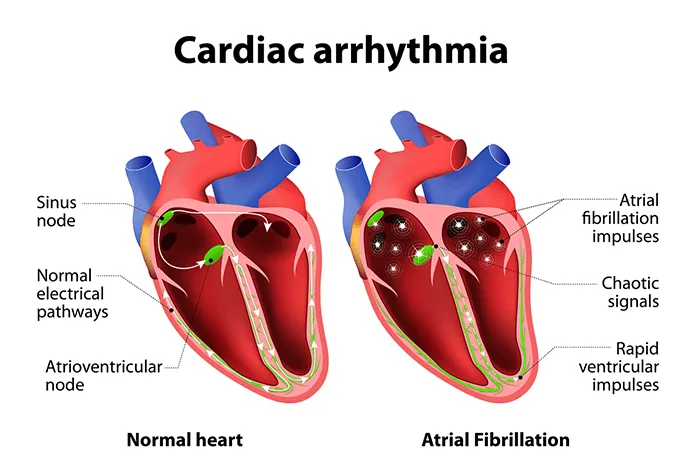
- Reduced urine output (oliguria) or sudden kidney failure (acute renal failure)
In severe cases, you might also experience neurological issues like confusion, drowsiness (lethargy), or seizures. These can be due to dangerously low sodium levels or insufficient blood flow to the brain.
Recommended Immediate Treatment Steps
In an overdose situation, the immediate priority is to stabilize the patient's blood circulation. This involves:
- Giving intravenous fluids (like saline) right away.
- Position the patient flat on their back with their legs raised.
- If fluids alone don't work, administering vasopressors to raise blood pressure.
- Continuously monitoring their heart rhythm and electrolyte levels.
If the overdose happened very recently, activated charcoal might be considered, though it's less effective if a lot of time has passed. Flushing the stomach (gastric lavage) is rarely recommended.
Role of Dialysis and Supportive Care
Olmesartan binds strongly to proteins. Is not easily eliminated during hemodialysis treatment. Hydrochlorothiazide has protein binding and can be partially removed through dialysis; however, the therapeutic advantage is limited. Henceforth treatment predominantly involves providing care and closely monitoring fluid electrolyte levels and kidney function until the harmful effects diminish.
Important Handling and Safety Precautions
Safe Storage and Handling of Tablets
Winbp H tablets should be kept in the packaging to maintain their quality and effectiveness. Its important to store them out of the reach of children and pets, for safety reasons. Patients are advised not to transfer the tablets to containers or pill organizers unless they can ensure that protection against moisture is, in place.
Avoiding Moisture and Direct Light
To maintain the quality of the tablets and ensure their effectiveness it's important to store the medication in an cool place. Avoid refrigerating or freezing them and make sure to keep the blister packs sealed until you're ready to take them.
Patient Instructions on Disposal of Expired Medicine
It is not recommended to dispose of expired or unused tablets by flushing them down the toilet or throwing them in household trash bins as this can be harmful, to the environment and potentially dangerous, for others. Patients should follow these guidelines;
Return any medications to a pharmacys take back program if one is accessible.
If there is no way to return the item back, to the store or seller for a refund or exchange you can break the tablet into pieces. Mix it with materials, like old coffee grounds before putting it in a sealed bag and throwing it away in the garbage bin.
Storage and Shelf Life
Recommended Storage Temperature
Store Winbp H at a consistent room temperature between 15°C to 30°C (59°F to 86°F). It's important to avoid temperature fluctuations, beyond this range, as it could affect the potency of the ingredients or impact how easily the medication is absorbed by the body.
Shelf Life and Expiry Information
Each batch of Winbp H comes with a designated expiration date, usually ranging from 24 to 36 months after the manufacturing date indicated on the label. It is important not to continue using the product once it reaches its expiration date as there may be uncertainties regarding its stability and effectiveness.
Packaging and Labeling Precautions
Be sure to keep the tag readable and, in place at all times, don't take out the drying agent if it's inside bottles avoid cutting or puncturing blister packaging soon, and make sure that the pharmacy labels show the expiry date and patient directions clearly to avoid any mix ups or deterioration.
Winbp H, Hydrochlorothiazide/ Olmesartan FAQ
- How Hydrochlorothiazide works?
- What is Hydrochlorothiazide?
- What are the long-term side effects of Hydrochlorothiazide ?
- What are the dangers of taking Hydrochlorothiazide ?
- Does Hydrochlorothiazide cause weight gain?
- How long does it take for Hydrochlorothiazide to lower blood pressure?
- What does Hydrochlorothiazide do?
- What is the lowest dose of Hydrochlorothiazide ?
- What are the most common side effects of Hydrochlorothiazide ?
- What are the side effects of stopping Hydrochlorothiazide ?
- How does Hydrochlorothiazide work?
- Does Hydrochlorothiazide cause hair loss?
- How long does Hydrochlorothiazide stay in your system?
- What are the side effects of Hydrochlorothiazide ?
- How long does it take Hydrochlorothiazide to work?
- How fast does Hydrochlorothiazide work?
- Does Hydrochlorothiazide cause erectile dysfunction?
- Best time to take Hydrochlorothiazide ?
- When to take Hydrochlorothiazide ?
- Hydrochlorothiazide how long does it take to work?
- Is Hydrochlorothiazide a blood thinner?
- Are Hydrochlorothiazide and furosemide the same thing?
- Are Hydrochlorothiazide and lisinopril the same thing?
- Are Hydrochlorothiazide and chlorthalidone the same?
- Are hydrochlorothiazide and hydralazine the same?
- Are Hydrochlorothiazide and losartan the same thing?
- Are Hydrochlorothiazide and lasix the same?
- Are Hydrochlorothiazide and hydrochlorot the same thing?
- Are Hydrochlorothiazide and hydrochloride the same?
- What are Hydrochlorothiazide pills for?
- What are Hydrochlorothiazide used for?
- Why are Hydrochlorothiazide and spironolactone given together?
- What are Hydrochlorothiazide pills used for?
- What are Hydrochlorothiazide tablets used for?
- What are Hydrochlorothiazide side effects?
- Are spironolactone and Hydrochlorothiazide the same?
- Can Hydrochlorothiazide cause gout?
- Can Hydrochlorothiazide cause dizziness?
- Can Hydrochlorothiazide cause weight gain?
- Can Hydrochlorothiazide cause low potassium?
- Can Hydrochlorothiazide cause kidney damage?
- Can Hydrochlorothiazide cause constipation?
- Can Hydrochlorothiazide cause tinnitus?
- Can Hydrochlorothiazide cause diarrhea?
- Can Hydrochlorothiazide cause hyponatremia?
- Can Hydrochlorothiazide cause dehydration?
- Can Hydrochlorothiazide cause anxiety?
- Can Hydrochlorothiazide cause diabetes?
- Can Hydrochlorothiazide cause low sodium?
- Can Hydrochlorothiazide cause weight loss?
- How Hydrochlorothiazide cause hyperglycemia?
- How Hydrochlorothiazide weight loss?
- How Hydrochlorothiazide mechanism of action?
- Hydrochlorothiazide what type of diuretic?
- How Olmesartan works?
- Difference between Olmesartan and Olmesartan medoxomil?
- Is Olmesartan a beta blocker?
- Can I take Olmesartan twice a day?
- What is the maximum dose of Olmesartan?
- Does Olmesartan cause weight gain?
- How long does Olmesartan stay in your system?
- Does Olmesartan cause hair loss?
- What is Olmesartan ?
- Are Olmesartan and Telmisartan the same?
- Are Olmesartan and Losartan the same?
- Are Olmesartan and Olmesartan Medoxomil the same?
- Are Olmesartan and Irbesartan the same?
- Are Olmesartan and Valsartan the same?
- Are Olmesartan and Amlodipine the same?
- Are Olmesartan and Losartan similar?
- What are Olmesartan tablets used for?
- Are Candesartan and Olmesartan the same?
- Are Benicar and Olmesartan the same?
- Are Olmetec and Olmesartan the same?
- Can Olmesartan be cut in half?
- Can Olmesartan cause weight gain?
- Can Olmesartan cause a cough?
- Can Olmesartan cause constipation?
- Can Olmesartan cause hair loss?
- Can Olmesartan cause anxiety?
- Can Olmesartan lower heart rate?
- Can Olmesartan cause hyponatremia?
- Can Olmesartan cause dizziness?
- Can Olmesartan raise blood pressure?
- Can Olmesartan cause ed?
- Can Olmesartan be crushed?
- Can Olmesartan cause liver damage?
- Can Olmesartan and Carvedilol be taken together?
- Can Olmesartan cause tinnitus?
- How does Olmesartan medoxomil works?
- How Olmesartan is better than telmisartan?
- Olmesartan how long does it take to work?
- Olmesartan how long to take effect?
- Olmesartan how quickly does it work?
- Olmesartan how long does it last?
- Olmesartan how many times a day?
- Which is better Olmesartan or Lisinopril?
- Which is better Olmesartan or Valsartan?
- Which is better Olmesartan or Amlodipine?
- Which is better Olmesartan or Losartan?
- Which is better Olmesartan or Telmisartan?
- Why does Olmesartan cause weight gain?
- Will Olmesartan cause hair loss?
- Will Olmesartan cause ed?
- Will Olmesartan lower blood pressure?
How Hydrochlorothiazide works?
Hydrochlorothiazide functions, by blocking the reabsorption of sodium in the tubes of the kidneys which results in higher elimination of sodium and water, from the body system hence reducing blood volume and subsequently lowering blood pressure levels while also facilitating the expulsion of potassium and chloride components.
What is Hydrochlorothiazide?
Hydrochlorothiazide, a diuretic is often prescribed for managing blood pressure and fluid retention (edema). Its role, in reducing the likelihood of strokes and heart attacks is attributed to its ability to lower blood pressure; additionally it may be recommended for instances of heart failure and kidney related conditions.
What are the long-term side effects of Hydrochlorothiazide ?
Prolonged use of Hydrochlorothiazide might result in imbalances, in electrolytes, like reduced potassium and sodium levels It could also elevate blood sugar levels and uric acid (which may trigger gout) and potentially lead to kidney issues In instances it could impact lipid levels or induce sensitivity to sunlight
What are the dangers of taking Hydrochlorothiazide ?
The main risks involve disruptions, in levels, like low potassium or low sodium levels; dehydration; kidney problems; and high blood sugar or uric acid levels being elevated in the body.. Uncommon yet severe responses consist of pancreatitis incidents; reactions; and irregular heart rhythms.
Does Hydrochlorothiazide cause weight gain?
Typically Hydrochlorothiazide does not lead to weight gain;, in reality because of its diuresis properties it might result in weight loss from expelling fluids out of the body instead Any increase in weight ought to trigger an assessment, for root causes.
How long does it take for Hydrochlorothiazide to lower blood pressure?
Blood pressure decrease can start around 2 hours after taking the medication and reach its impact, between 4 to 8 hours later. It may require days to a weeks of consistent usage to experience the full therapeutic benefits.
What does Hydrochlorothiazide do?
Hydrochlorothiazide lowers blood pressure. Eliminates fluid from the body by encouraging the kidneys to release sodium and water reducing blood volume and aiding in the control of high blood pressure and swelling.
What is the lowest dose of Hydrochlorothiazide ?
The typical starting dose of Hydrochlorothiazide is usually 12.C mg, per day when treating blood pressure either on its own or, with medicines.
What are the most common side effects of Hydrochlorothiazide ?
The usual side effects consist of urination feeling dizzy, headaches, muscle cramps and reduced levels of potassium. On occasions it might lead to a skin rash blood sugar levels or increased uric acid levels, in the body.
What are the side effects of stopping Hydrochlorothiazide ?
Stopping suddenly could cause a rise, in blood pressure or a comeback of buildup in the body, without warning signs of withdrawal present; however the original issue may deteriorate if left unattended or untreated.
How does Hydrochlorothiazide work?
Hydrochlorothiazide operates by obstruct the sodium chloride transporters in the tubule of the kidney leading to a rise, in the elimination of sodium and chloride along, with water; this action reduces blood pressure and diminishes swelling.
Does Hydrochlorothiazide cause hair loss?
Hair loss is not typically associated with Hydrochlorothiazide; however, there have been instances of alopecia reported with its use. If you experience hair thinning while taking this medication it's advisable to investigate causes or medications that could be contributing to this issue.
How long does Hydrochlorothiazide stay in your system?
Hydrochlorothiazide typically remains in the body for 6 to 15 hours before being cleared from the system which usually takes around 1 to 2 days based on kidney function.
What are the side effects of Hydrochlorothiazide ?
Some possible reactions may involve feeling lightheadedness or dizzy spells and experiencing trips, to the bathroom due to increased urination frequency; others could include imbalances in potassium or sodium levels leading to weakness in muscles and elevated blood sugar levels causing sensitivity to sunlight or skin rashes; moreover in instances complications, like pancreatitis or kidney problems may arise as well.
How long does it take Hydrochlorothiazide to work?
Hydrochlorothiazide typically starts to take effect 2 hours after you take it and reaches its impact in 4 to 6 hours time frame. Maintaining stable blood pressure levels may require a few weeks of consistent use.
How fast does Hydrochlorothiazide work?
Hydrochlorothiazide usually begins to take effect, around 2 hours after being taken and shows its effects between 4 to 6 hours later.Adjustments, in blood pressure that are noticeable may require use over days.
Does Hydrochlorothiazide cause erectile dysfunction?
Possible but uncommon side effects of Hydrochlorothiazide include dysfunction which can be linked to alterations, in blood pressure and circulation or changes in electrolyte balance; however it is frequently observed with higher doses or when used in conjunction, with other medications.
Best time to take Hydrochlorothiazide ?
The optimal time to take Hydrochlorothiazide is, in the morning – with or right, after your breakfast – to lessen the chances of waking up for urination during the night and to ensure its effectiveness without disrupting sleep patterns.
When to take Hydrochlorothiazide ?
Hydrochlorothiazide is typically recommended for morning intake unless advised otherwise by a doctor to minimize the occurrence of urination caused by its diuretic properties.
Hydrochlorothiazide how long does it take to work?
Hydrochlorothiazide usually starts working within 2 hours and reaches its peak effectiveness, between 4 to 6 hours after intake to achieve blood pressure regulation; it may require regular daily consumption, for one to two weeks for optimal control.
Is Hydrochlorothiazide a blood thinner?
Hydrochlorothiazide is not classified as a blood thinner; instead it belongs to the group of diuretics that are employed to alleviate retention and decrease blood pressure by encouraging the elimination of sodium and water from the body.
Are Hydrochlorothiazide and furosemide the same thing?
Hydrochlorothiazide and Furosemide are not the kind of diuretics; Hydrochlorothiazide belongs to the diuretic category while Furosemide is classified as a loop diuretic typically utilized for stronger water elimination in cases such, as heart failure or significant edema issues.
Are Hydrochlorothiazide and lisinopril the same thing?
Hydrochlorothiazide functions, as a diuretic whereas Lisinopril acts as an ACE inhibitor; frequently employed together in treatment to better control hypertension.
Are Hydrochlorothiazide and chlorthalidone the same?
While both Chlorthalidone and Hydrochlorothiazide are thiazide type diuretics, with uses in treating blood pressure due to their pharmacological similarities and effects, in the body mechanisms regulation of fluid and electrolyte balance to lower blood pressure levels through increased urine output; Chlorthalidone is distinguished by its longer period of effectiveness compared to Hydrochlorothiazide.
Are hydrochlorothiazide and hydralazine the same?
Hydrochlorothiazide works as a diuretic while Hydralazine acts directly as a vasodilator medication.You can use both to manage blood pressure; however they function through mechanisms and are frequently prescribed together for treatment purposes.
Are Hydrochlorothiazide and losartan the same thing?
Hydrochlorothiazide works as a diuretic while Losartan functions, as an angiotensin II receptor blocker (ARB). Although they belong to drug classes they are often prescribed together for the treatment of hypertension.
Are Hydrochlorothiazide and lasix the same?
Lasix is actually a brand name, for Furosemide which falls under the category of loop diuretics while Hydrochlorothiazide belongs to diuretics. Lasix is known to be more potent. Is often prescribed for intense removal of fluids, from the body.
Are Hydrochlorothiazide and hydrochlorot the same thing?
Hydrochlorot could possibly be a typo or a local brand name; however its commonly used interchangeably with Hydrochlorothiazide among people, in the know. Check the product label to confirm the accurate formulation.
Are Hydrochlorothiazide and hydrochloride the same?
Hydrochlorothiazide is actually the name of a medication; whereas hydrochloride is a chemical salt form commonly found in various medications. They are distinct terms and cannot be used interchangeably.
What are Hydrochlorothiazide pills for?
Hydrochlorothiazide tablets are often recommended by doctors to address hypertension and fluid retention (edema) which can arise from issues such, as heart failure or liver and kidney ailments.
What are Hydrochlorothiazide used for?
Hydrochlorothiazide is mainly prescribed for managing blood pressure (hypertension) as well as fluid retention (edema) which can be linked to conditions like heart failure and liver cirrhosis or kidney issues. Lowering blood pressure is vital in reducing the risks of strokes and heart attacks while also safeguarding against kidney complications.
Why are Hydrochlorothiazide and spironolactone given together?
Hydrochlorothiazide and Spironolactone are commonly prescribed together to treat blood pressure or fluid retention with a focus on reducing potassium depletion risks associated with Hydrochlorothiazide. Though Hydrochlorothiazide may lower potassium levels, in the body Spironolactone helps retain potassium, resulting in a diuretic action.
What are Hydrochlorothiazide pills used for?
Hydrochlorothiazide tablets are prescribed for the purpose of reducing blood pressure and managing an accumulation of fluids associated with ailments such, as heart failure and specific liver and kidney diseases; this medication aids, in lowering the likelihood of heart related issues.
What are Hydrochlorothiazide tablets used for?
Hydrochlorothiazide tablets are often prescribed for controlling blood pressure and managing swelling by helping the body get rid of salt and water through the kidneys either by themselves or, alongside other medications, for hypertension treatment.
What are Hydrochlorothiazide side effects?
Frequently encountered side effects consist of urination, lightheadedness, muscle cramps, headaches, decreased potassium levels and feeling tired. Occasional effects involve heightened blood sugar levels, gout outbreaks, skin rashes or changes, in levels, like sodium or magnesium deficiency.
Are spironolactone and Hydrochlorothiazide the same?
Spironolactone and Hydrochlorothiazide have functionalities – the former, as a potassium sparing diuretic and the latter as a diuretic; their actions and impacts on electrolyte levels vary notably with potassium being a significant differentiator, between them.
Can Hydrochlorothiazide cause gout?
Hydrochlorothiazide has the potential to increase acid levels, in the body. Could lead to gout flare ups in those who are prone to it when used for extended periods or, at higher dosages.
Can Hydrochlorothiazide cause dizziness?
Feeling lightheaded is an occurrence that often happens when you first begin taking the medication or suddenly stand up from a sitting position fast.It occurs due, to a drop, in blood pressure or lack of fluids leading to dehydration.
Can Hydrochlorothiazide cause weight gain?
Hydrochlorothiazide usually does not lead to weight gain; in reality, it may even promote weight reduction as a result of its diuresis effect. Any abnormal changes in weight should be assessed by a healthcare provider.
Can Hydrochlorothiazide cause low potassium?
Hydrochlorothiazide often causes a decrease in potassium levels by promoting its release through urine flow. Low potassium levels can result in tiredness، muscle weakness، or irregular heartbeats.
Can Hydrochlorothiazide cause kidney damage?
In some situations, in individuals with existing kidney issues or extreme dehydration Hydrochlorothiazide could potentially cause problems with kidney function. It is advisable to check kidney function and electrolyte levels, for these individuals.
Can Hydrochlorothiazide cause constipation?
Constipation isn't a side effect; however dehydration resulting from fluid loss could potentially play a role, in it for certain individuals.
Can Hydrochlorothiazide cause tinnitus?
If you experience a ringing in your ears while taking Hydrochlorothiazide medication it is recommended to seek advice as tinnitus could be a potential side effect though not common.
Can Hydrochlorothiazide cause diarrhea?
Diarrhea is a side effect of Hydrochlorothiazide that may happen but is typically mild and temporary; however it should be mentioned if it continues or becomes severe.
Can Hydrochlorothiazide cause hyponatremia?
Hyponatremia can be a side effect of Hydrochlorothiazide, in individuals or those taking medications that impact sodium levels. The symptoms to watch out for are confusion,dizziness and headaches.
Can Hydrochlorothiazide cause dehydration?
Hydrochlorothiazide has the potential to cause dehydration as it encourages the body to lose fluids through frequent urination. Common signs of dehydration may involve mouth sensation along with feelings of weakness and dizziness, in addition to experiencing blood pressure levels; especially noticeable, during warm weather conditions or when not consuming enough fluids.
Can Hydrochlorothiazide cause anxiety?
Anxiety is not frequently listed as a known side effect of Hydrochlorothiazide medication. Usage of the drug may lead to variations, in levels and blood pressure that could manifest as symptoms to anxiety, for certain individuals.
Can Hydrochlorothiazide cause diabetes?
Hydrochlorothiazide could affect how your body processes glucose and potentially raise blood sugar levels over time, for people, at risk of diabetes; although it doesn't directly induce diabetes itself, but could reveal or exacerbate predisease conditions.
Can Hydrochlorothiazide cause low sodium?
Hydrochlorothiazide has the potential to lead to hyponatremia. A situation marked by levels of sodium, in the bloodstream. Especially, in older individuals or individuals who are concurrently using other medications that impact sodium levels.
Can Hydrochlorothiazide cause weight loss?
Hydrochlorothiazide could lead to a decrease, in weight at the start because of expelling fluids than burning fat off the bodys system; however if there is persistent or unexplained weight loss occurring it is advisable to seek evaluation, for other potential underlying reasons.
How Hydrochlorothiazide cause hyperglycemia?
Hydrochlorothiazide might decrease how well insulin works and impact how the body absorbs glucose, in tissues around the body as increase the production of glucose in the liver that may result in higher blood sugar levels, for some individuals.
How Hydrochlorothiazide weight loss?
The weight loss caused by Hydrochlorothiazide mainly comes from the body losing water due, to increased urination than, from burning fat. Usually stays stable with ongoing usage.
How Hydrochlorothiazide mechanism of action?
Hydrochlorothiazide works on the tubule of the kidneys nephron by blocking the sodium chloride symporter function there.This leads to a rise, in the elimination of sodium and chloride along with water, from the body reducing plasma volume and bringing down blood pressure levels.
Hydrochlorothiazide what type of diuretic?
Hydrochlorothiazide falls under the category of a diuretic. It is often prescribed for managing high blood pressure and mild, to moderate water retention issues.
How Olmesartan works?
Olmesartan functions, by inhibiting the angiotensin II type ictationt (AT3 receptors) thus hindering vasoconstriction. Lowering aldosterone secretion levels. This leads to decreased blood pressure due, to widened blood vessels and reduced fluid accumulation.
Difference between Olmesartan and Olmesartan medoxomil?
Olmesartan Medoxomil is a type of medication that transforms into the component Olmesartan within the system. In terms of function and purpose both versions signify the ingredient utilized in controlling hypertension.
Is Olmesartan a beta blocker?
Olmesartan is actually not classified as a beta blocker; as an angiotensin II receptor blocker (ARB) which is prescribed for managing blood pressure by easing the constriction of blood vessels.
Can I take Olmesartan twice a day?
Olmesartan is typically prescribed for use because of its extended action period; however under certain clinical circumstances a doctor might opt to increase the dosages to twice daily to achieve improved management of blood pressure.
What is the maximum dose of Olmesartan?
The usual dose of Olmesartan, for adults is generally 40 mg once a day, as advised by a healthcare professional according to how the individual responds to the medication and their ability to tolerate its effects.
Does Olmesartan cause weight gain?
Weight increase isn't usually linked to taking Olmesartan as a medication treatment option, for individuals with blood pressure issues or heart problems, like heart attacks and strokes. If someone experiences sudden alterations in their weight without a reason seeking medical advice is important to pinpoint any underlying reasons that could be contributing to this change.
How long does Olmesartan stay in your system?
Olmesartan takes 13 hours to be eliminated from the body and can linger in the system for 2 to 3 days based on kidney function and individual metabolism.
Does Olmesartan cause hair loss?
Hair loss is not a consequence of using Olmesartan; although some isolated instances have been documented in the past.. In case there is hair thinning experienced by an individual taking the medication a thorough evaluation is recommended to eliminate any possible reasons, behind this occurrence.
What is Olmesartan ?
Olmesartan is a medication classified as an angiotensin II receptor blocker (ARB) prescribed for managing blood pressure conditions in individuals by helping to relax blood vessels and enhance blood circulation to lower risks.
Are Olmesartan and Telmisartan the same?
Olmesartan and Telmisartan belong to the class of drugs known as ARBs; however they vary in their chemical compositions how they are processed in the body and other unique characteristics. While both are useful, in treating blood pressure individual patients may find that one medication works better for them than the other.
Are Olmesartan and Losartan the same?
Olmesartan and Losartan are both considered ARBs; however they vary in terms of potency levels. How long they stay active in the body well as how often they need to be taken. Olmesartan is known to offer control, over blood pressure compared to Losartan.
Are Olmesartan and Olmesartan Medoxomil the same?
Olmesartan Medoxomil is a type of medication that transforms into the form known as Olmesartan within the bodys system and is commonly prescribed for treating hypertension.
Are Olmesartan and Irbesartan the same?
Olmesartan and Irbesartan are not the type of ARBs; they share mechanisms but can vary in bioavailability, half life and tolerability based on the individual patient.
Are Olmesartan and Valsartan the same?
Olmesartan and Valsartan are not the type of ARBs; they have differences, in how they work to lower blood pressure and how effective they're, for individual patients.
Are Olmesartan and Amlodipine the same?
Olmesartan functions as an angiotensin receptor blocker (ARB), whereas Amlodipine acts as a calcium channel blocker, in the body's systems. They may be prescribed in conjunction to enhance the regulation of blood pressure by leveraging their mechanisms in tandem.
Are Olmesartan and Losartan similar?
Both of them belong to the class of ARBs and function, in a manner in the body systems; yet they vary notably in terms of how they are metabolized in the body and their strength levels. Olmesartan typically provides a more reliable maintenance of blood pressure, over a full 24 hour period compared to its counterpart.
What are Olmesartan tablets used for?
Olmesartan tablets are prescribed for managing blood pressure to decrease the chances of a stroke and heart attack while also lowering the risk of kidney issues.
Are Candesartan and Olmesartan the same?
Candesartan and Olmesartan are. Arbs. Have different chemical compositions which result in varying dosages and metabolic processes.They can also elicit responses, among patients at times.
Are Benicar and Olmesartan the same?
Benicar is the brand name, for Olmesartan Medoxomil; they're essentially the same medication but Benicar is the branded version.
Are Olmetec and Olmesartan the same?
Indeed Olemtec and Olmesartan Medoxomil are essentially interchangeable as they denote the component employed in managing high blood pressure issues.
Can Olmesartan be cut in half?
Olmesartan tablets usually do not have a score mark, for splitting them. Can be divided if a lower dose is necessary and recommended by a doctor, for dosages; ensure to use an appropriate pill cutter when required.
Can Olmesartan cause weight gain?
Weight gain is not something typically linked to Olmesartans side effects according to knowledge and understanding, in the field. If there are changes in weight that occur unexpectedly due to reasons, like fluid retention or metabolic concerns; looking into these factors could provide valuable insights and solutions.
Can Olmesartan cause a cough?
Olmesartan is not as likely as ACE inhibitors to lead to a cough; nevertheless some patients may experience cough symptoms with Olmesartan although this occurrence is typically less common compared to medications such, as Lisinopril.
Can Olmesartan cause constipation?
Constipation is uncommonly associated with Olmesartan usage; however rare cases have been documented where this side effect occurs sporadically in some individuals receiving this medication regimen.
Can Olmesartan cause hair loss?
Hair loss is not a side effect linked with Olmesartan usage. While there are some reports mentioning this issue the direct link is uncertain. Should be considered alongside other possible factors.
Can Olmesartan cause anxiety?
Anxiety is not commonly associated with Olmesartan as a side effect; nevertheless personal responses can. Changes, in electrolytes or blood pressure might impact ones mood in instances.
Can Olmesartan lower heart rate?
Olmesartan usually doesn't have an impact, on heart rate; instead its mechanism involves relaxing blood vessels as opposed to reducing conduction, which is common, with beta blockers.
Can Olmesartan cause hyponatremia?
Olmesartan may lead to hyponatremia as a side effect when taken with diuretics; thus monitoring levels is advised throughout the treatment period, for caution and safety purposes.
Can Olmesartan cause dizziness?
Olmesartan may lead to feelings of dizziness when starting the medication or experiencing a reduction, in blood pressure levels.This sensation is typically more noticeable when standing up swiftly from a seated or lying position.
Can Olmesartan raise blood pressure?
Olmesartan is prescribed for reducing blood pressure levels in individuals; yet if the medication is abruptly stopped or not taken as directed blood pressure could potentially increase more. In instances unexpected spikes, in blood pressure may arise as a result of underlying health conditions.
Can Olmesartan cause ed?
Some individuals may experience dysfunction as a side effect of Olmesartan usage; however when compared to other antihypertensive medications ARBs such, as Olmesartan are typically less linked to ED complaints.
Can Olmesartan be crushed?
Olmesartan tablets should not be crushed because doing so could impact how the medication is absorbed in the body.If you have difficulty swallowing the tablets discuss solutions, with a doctor or pharmacist before making any changes to the way you take the medication.
Can Olmesartan cause liver damage?
Rare occurrences of liver damage, due to Olmesartan have been noted; although linked with increases in liver enzyme levels; any indications of jaundice; dark urine; or weariness warrant evaluation, without delay.
Can Olmesartan and Carvedilol be taken together?
Olmesartan and Carvedilol are safe to be taken with medical oversight, in place. These medications work differently—Olmesartan acts as an angiotensin II receptor blocker (ARB) while Carvedilol functions as a beta blocker—and they are commonly prescribed together to address conditions, like hypertension or heart failure.
Can Olmesartan cause tinnitus?
Not many people experience tinnitus as a result of taking Olmesartan; however occasional reports have mentioned this side effect occurrence. It is recommended to seek evaluation if you notice ringing in your ears to eliminate other potential causes.
How does Olmesartan medoxomil works?
Olmesartan Medoxomil functions, as a prodrug that undergoes conversion, in the wall to produce its state as Olmesartan It hinders the angiotensin II type 1 receptor leading to the prevention of vasoconstriction and aldosterone release resulting in decreased blood pressure levels.
How Olmesartan is better than telmisartan?
Olmesartan is deemed to be more effective, in reducing blood pressure according to studies which demonstrate its ability to offer a steadier and prolonged 24 hour regulation of blood pressure levels; on the other hand Telmisartan exhibits additional metabolic impacts and has a longer duration of action hence the selection relies on the specific clinical requirements of the patient.
Olmesartan how long does it take to work?
Olmesartan typically starts reducing blood pressure, around 1 to 2 hours after taking with antihypertensive benefits often seen within the first week or two of regular intake.
Olmesartan how long to take effect?
The complete reduction, in blood pressure caused by Olmesartan might require around 2 weeks to take effect; however initial changes could be noticeable within a hours of intake.It is essential to maintain a dosage, for control.
Olmesartan how quickly does it work?
Olmesartan typically begins to take effect within 1 to 2 hours. Often reaches its blood pressure lowering effects, between 2 to 8 hours after being taken.
Olmesartan how long does it last?
Olmesartan offers all day blood pressure management when taken once a day providing effects that continue through the night with consistent use, over time.
Olmesartan how many times a day?
Olmesartan is usually taken once a day; however some doctors may suggest splitting the dosage, for daily intake based on how the patient responds to the treatment.
Which is better Olmesartan or Lisinopril?
Olmesartan and Lisinopril are both good, for lowering blood pressure levels; however Olmesartan might be an option for those who experience coughing as an effect, from Lisinopril since the latter is an ACE inhibitor drug choice should be based upon how well each person can tolerate the medication and their other existing health conditions.
Which is better Olmesartan or Valsartan?
In cases, for some individuals receiving treatment with Olmesartan might offer a decrease in blood pressure compared to Valsartan; yet both medications fall under the category of ARBs and are chosen depending upon the patients response to treatment in a clinical setting as well, as their tolerance levels and availability of the medication.
Which is better Olmesartan or Amlodipine?
Olmesartan and Amlodipine have modes of action; Olmesartan blocks angiotensin II receptors while Amlodipine inhibits calcium channels. Amlodipine might lead to increased edema compared to Olmesartan which's less prone, to causing this issue. Combining both medications often results in efficacy than using either one.
Which is better Olmesartan or Losartan?
Olmesartan is commonly seen as stronger. Having a duration of action compared to Losartan.It might offer more steady management of blood pressure levels throughout the day.
Which is better Olmesartan or Telmisartan?
Olmesartan provides treatment, for blood pressure while Telmisartan stands out for having the longest duration of action compared to other ARBs and potential advantages, for metabolic issues.It ultimately comes down to considering patient needs when choosing between the two options.
Why does Olmesartan cause weight gain?
Olmesartan is usually not linked to an increase, in weight gain; if such a change does happen it might be a result of retention or alterations in diet than unrelated health conditions.The importance of assessment is paramount, in determining the root cause of this occurrence.
Will Olmesartan cause hair loss?
Hair loss is not commonly associated with Olmesartan. If hair loss does occur other medications or health conditions should be taken into account as contributing factors.
Will Olmesartan cause ed?
Olmesartan may occasionally cause dysfunction. Its risk of affecting sexual function is typically lower, than that of beta blockers or diuretics.
Will Olmesartan lower blood pressure?
Olmesartan is made to help reduce blood pressure by inhibiting the actions of angiotensin II which results in widening of blood vessels and decreased resistance, in blood flow.

